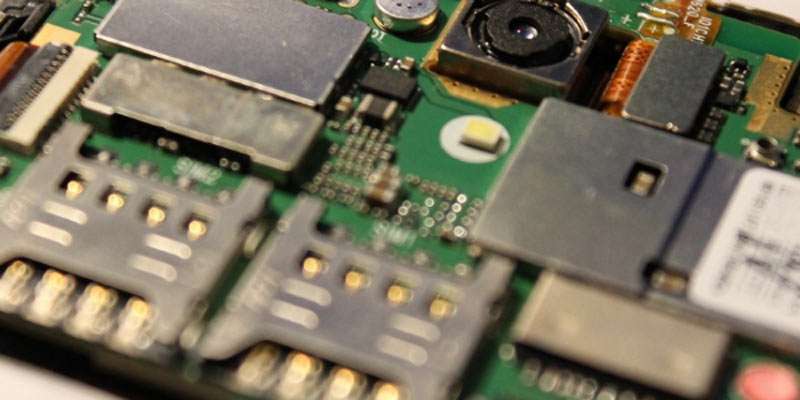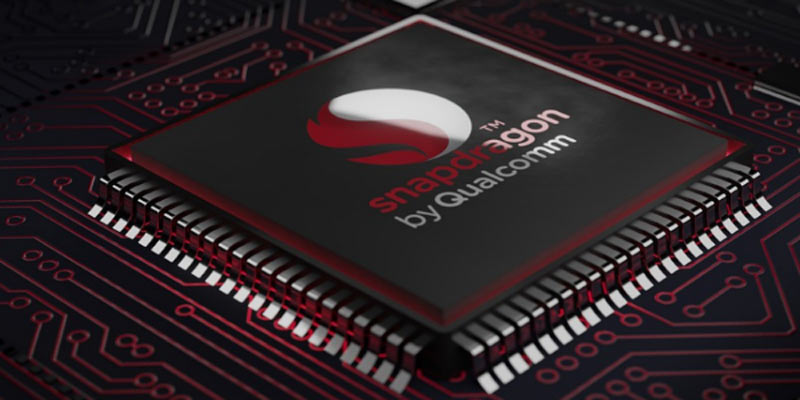In the dynamic world of technology, where advancements occur at the speed of light, phone chips are the quintessential gadget transforming how we communicate, work, and entertain ourselves. At the heart of our beloved smartphones lies this tiny yet powerful component that serves as the driving force behind their performance.
In this comprehensive exploration, we delve into the intricate realm of cell phone chips, understanding their impact on device functionality, unraveling their complex structure, and identifying the top contenders in the ever-evolving landscape of cell phone chips.
The Impact of Cell Phone Chips on Device Performance
The significance of cell phone chips in determining device performance cannot be overstated. These compact pieces of silicon pack an extraordinary punch, influencing various aspects of a mobile phone’s functionality, including speed, efficiency, and capabilities. Here’s how cell phone chips shape the performance of our beloved devices:
Processing Power
At the heart of every cell phone chip lies the central processing unit (CPU), which functions as the device’s brain. The CPU executes myriad tasks with lightning speed and precision, ranging from basic computations to complex operations.

A robust CPU ensures smooth multitasking, allowing users to seamlessly switch between applications without experiencing lag or slowdowns. Whether browsing the web, editing documents, or playing games, a powerful CPU enhances responsiveness and user experience.
Graphics Rendering
In today’s digital landscape, where high-definition displays and graphically intensive applications abound, the graphics processing unit (GPU) embedded within cell phone chips plays a pivotal role. The GPU renders exceptional speed and quality images, videos, and graphical interfaces. A potent GPU delivers stunning visuals and fluid animations for whatever multimedia task, elevating the overall visual experience and immersing users in a captivating digital world.
Efficiency and Battery Life
In addition to raw processing power, modern cell phone chips are designed to focus on efficiency and battery life. These chips strike a delicate balance between performance and energy consumption through advanced manufacturing processes and optimization techniques. By minimizing wasted energy and maximizing computational efficiency, cell phone chips extend battery life, ensuring prolonged usage without the need for frequent recharges. Whether navigating through a busy day of work and entertainment or embarking on extended journeys, users can rely on their devices to remain powered and ready when needed.
Connectivity and Networking
Beyond processing power and graphics rendering, cell phone chips are crucial in facilitating seamless connectivity and networking. These chips integrate various connectivity technologies such as Wi-Fi, Bluetooth, and cellular modems, enabling users to stay connected to the world around them. Whether browsing the web, streaming content, or making voice calls, a robust chip ensures reliable connectivity across diverse environments.
Furthermore, with technologies like 5G, cell phone chips are at the forefront of ushering in the next generation of wireless connectivity, offering unprecedented speed, reliability, and responsiveness.
Structure of a cell phone chip
To comprehend a cell phone chip’s inner workings, dissecting its structure is essential. It comprises several vital components meticulously engineered to deliver optimal performance. While the specific architecture may vary among different chip manufacturers, a typical cell phone chip consists of the following elements:

CPU
The central processing unit (CPU) forms the powerhouse of the phone chip and is responsible for executing instructions, performing calculations, and managing system resources. Comprising multiple cores, each capable of handling tasks concurrently, the CPU enhances multitasking capabilities. These cores may include high-performance cores for demanding tasks and power-efficient cores for lighter workloads, optimizing both performance and energy efficiency. By efficiently allocating tasks across cores, the CPU ensures smooth operation and responsiveness, enabling users to navigate various applications and functions seamlessly.
GPU
The graphics processing unit (GPU) specializes in rendering images, videos, and graphical interfaces with exceptional speed and quality. Equipped with dedicated processing cores optimized for parallel tasks, the GPU accelerates graphics-intensive operations, delivering fluid visuals and immersive gaming experiences. Through techniques such as parallel processing and shader programs, the GPU efficiently handles complex graphical computations, resulting in lifelike visuals and smooth animations. Whether gaming, video playback, or graphic design tasks, the GPU enhances the visual experience, making it more engaging and enjoyable for users.
RAM (Random Access Memory)
While not part of the chip per se, RAM plays a crucial role in conjunction with the cell phone chip. As temporary storage for data and instructions actively used by the CPU and GPU, RAM facilitates swift access and seamless multitasking. RAM reduces latency and enhances overall system performance by storing frequently accessed data closer to the processor. Moreover, the amount of RAM available determines the device’s ability to handle multiple applications simultaneously without experiencing slowdowns or performance bottlenecks. With ample RAM capacity, users can easily switch between apps, multitask, and run memory-intensive tasks, ensuring a smooth and responsive user experience.
Modem
The modem component enables wireless communication by integrating cellular connectivity standards such as 4G LTE or 5G. It ensures high-speed data transmission, reliable voice calls, and seamless connectivity to cellular networks, enhancing the device’s communication capabilities. The modem optimizes signal reception and transmission by supporting multiple frequency bands and advanced modulation techniques, ensuring robust connectivity even in challenging environments. Whether browsing the internet, streaming media, or making voice calls, the modem maintains uninterrupted communication, enabling users to stay connected wherever they go.
AI Engine
With the rise of artificial intelligence (AI) applications, many modern cell phone chips feature dedicated AI accelerators or neural processing units (NPUs). These specialized components enable on-device AI tasks such as image recognition, voice recognition, and natural language processing, unlocking many intelligent features and functionalities. The AI engine enhances performance and energy efficiency by offloading AI computations from the CPU and GPU to dedicated hardware, enabling faster and more accurate AI-based tasks. Whether enhancing camera capabilities, personalizing user experiences, or enabling intelligent assistants, the AI engine empowers mobile devices with intellectual capabilities that enrich the user experience and streamline everyday tasks.

Fabric Interconnect
A fabric interconnect or bus system facilitates efficient communication between various components within the phone chip. It is the backbone for data exchange, enabling seamless coordination and synchronization between CPU, GPU, AI engine, and other subsystems. The fabric interconnect ensures optimal performance and responsiveness across the phone chip by providing high-bandwidth, low-latency communication pathways. Whether transferring data between CPU cores, accessing memory resources, or coordinating AI tasks, the fabric interconnect is crucial in maximizing throughput and minimizing latency, enhancing overall system efficiency and performance.
Top Three Cell Phone Chips Currently
The competitive landscape of cell phone chips is fiercely contested, with leading semiconductor companies vying for performance, efficiency, and innovation supremacy. While numerous chips flood the market, three stand out as the current frontrunners:
Apple A-series Bionic Chip
Renowned for its unparalleled performance and efficiency, Apple’s A-series Bionic phone chipsets power the company’s flagship iPhones. These chips are meticulously designed and fabricated to meet Apple’s exacting standards, resulting in seamless integration with the iOS ecosystem. Built using cutting-edge fabrication processes such as TSMC’s advanced nodes, Apple’s A-series chips leverage custom-designed CPU and GPU cores to deliver blazing-fast performance. Fusing high-performance and energy-efficient cores ensures optimal power management, enabling prolonged battery life without compromising speed. Additionally, Apple’s focus on AI capabilities is evident with dedicated neural engines embedded within the phone chip. It seamlessly facilitates tasks such as image processing, facial recognition, and augmented reality with remarkable efficiency.
Qualcomm Snapdragon Series
Qualcomm’s Snapdragon series encompasses various chipsets catering to different mobile market segments. From flagship SoCs like the Snapdragon 8-series to mid-range and budget-friendly options, Snapdragon chips offer a compelling blend of performance, connectivity, and feature-rich capabilities. At the heart of Snapdragon phone chips lies Qualcomm’s Kryo CPU architecture, which boasts a combination of high-performance and power-efficient cores optimized for multitasking and energy efficiency. The integration of Adreno GPUs delivers exceptional graphics performance, enabling smooth gaming and multimedia experiences. Moreover, Qualcomm’s focus on connectivity is evident with integrated 5G modems across various Snapdragon models, ensuring future-proof connectivity for next-generation mobile networks. Advanced AI processing capabilities enhance user experience, enabling features such as voice recognition, natural language processing, and intelligent camera enhancements.
Samsung Exynos Series
Samsung’s Exynos series is a formidable competitor in the mobile phone chip arena, powering a significant portion of the company’s smartphones. Leveraging Samsung’s expertise in semiconductor manufacturing, Exynos chips boast cutting-edge CPU and GPU architectures designed to deliver uncompromising performance. Samsung’s custom-designed Mongoose CPU cores and ARM’s Mali GPUs provide a potent combination of power and efficiency, enabling smooth multitasking and immersive gaming experiences. Integrating advanced modem solutions ensures seamless connectivity across diverse networks, including 5G, LTE, and Wi-Fi. Furthermore, Samsung’s commitment to innovation is reflected in features such as neural processing units (NPUs) for AI tasks and dedicated image signal processors (ISPs) for superior camera performance. With a focus on versatility and performance, Samsung’s Exynos phone chips continue to push the boundaries of mobile computing, powering flagship smartphones and driving technological innovation forward.
Final Words
In conclusion, the cell phone chip is the cornerstone of device performance, profoundly influencing speed, efficiency, and functionality. As technology marches forward, the relentless pursuit of innovation ensures that cell phone chips will continue to evolve, pushing the boundaries of what’s possible in the palm of our hands. With each new iteration, these phone chips reaffirm their status as the beating heart of modern smartphones.




